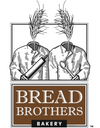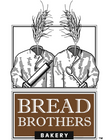Bread Baking Basics, pt. 2
Welcome to part two of Bread Baking Basics! In this chapter, we'll go into more detail about ingredients. We'll talk about what makes sandwich bread different, learn a little more about yeast, explore how ingredients can play different roles in a recipe, and discuss the ideas of quality, options, and substitutions.
Sandwich Bread
Let's first address the little note we mentioned in the first chapter - different kinds of bread require different ingredients. A basic loaf of bread made with flour, water, salt, and yeast will usually yield something from the rustic bread family. Think about the round breads in your grocery store's bakery section - a little harder, crispy on the outside, and perfect for dipping in soup or slicing and serving with a dish of butter. Not necessarily what you'd pick for a PB&J.
Sandwich bread is a slight evolution from the simplest bread, and can be broken down into 6 core ingredients: flour, water, salt, yeast, fat, and sugar. Something as simple as a tablespoon each of olive oil and honey could be the difference between a crusty baguette dipped in your soup, or a silky smooth sliced sandwich loaf (say that 5 times fast). Both are equally delicious, but it's important to make sure that your basic formula will yield the type of bread you're looking for.
Yeast
Next up on ingredients is yeast. Don't worry, we're still keeping it simple. There are three main kinds of yeast, and your recipe will almost always tell you what kind to use. However, it's still good to know the differences between each of these varieties.
First is active dry yeast. This is the most common form of yeast for most at-home bakers, and it's usually sold in jars or packets. It comes in cornmeal-like granules containing yeast that's alive, but dormant. It “wakes up” when you dissolve the granules in warm water, a process sometimes referred to as proofing, proving, or activating the yeast. Water that's just a little warmer than room temperature should work just fine - too hot will kill the yeast, and too cold won't wake it up. After a few minutes, look for foam in the water. Foam means the yeast is alive and well, and ready to go! If there's no foam, try adjusting your water temperature and try again. If you've tried a few times and still don't see foam, your yeast is likely dead. You'll need to throw it out and get a new batch.
Next is instant yeast. It's similar to active dry yeast, but the granules are smaller. It absorbs more easily into the dough and doesn't need to be activated in water. In most cases, it's simply added to the other dry ingredients in a recipe, and it activates as you mix your dough.
Last is fresh yeast. As the name implies, this form of yeast does not come dried or dormant. It is sold in small, refrigerated cakes - almost like a pat of butter - and has a much shorter shelf life than dried yeast (think 2 weeks vs. 6 months). It remains active in your dough longer than other types of yeast and is useful for recipes where the bread will rise for a long time.
Surprise! There is technically a fourth kind of yeast: sourdough starter. To learn more about sourdough starter and the fascinating world of sourdough as a whole, check out our last article, “Why You Shouldn't Overlook Sourdough”.
Bleached vs. Unbleached, and Other Tips
We also want to share a few tips about ingredients in general. First, it's good to know that ingredients often serve more than just their primary function. Let's take salt as an example. Salt gives bread flavor, and if you tried to make a loaf without it, you'd quickly realize how important that flavor is. However, salt also interacts with both yeast and protein molecules in the dough and plays a significant role in the texture of the final product. Salt is generally considered an essential ingredient in bread. (There's an old tale of a king whose daughter proclaims to love her father “like bread loves salt”, which serves to further illustrate its importance.)
The idea of ingredients having multiple roles also comes into play when making substitutions. For example, any fat will help give bread a smoother, softer texture, but your bread will taste very different if you substitute olive oil for bacon fat. There's nothing wrong with removing ingredients, adding ingredients, or making substitutions, just be aware that certain changes may affect the bread in more ways than one.
The next tip about ingredients is that quality matters. Remember when we said that your bread would be healthier than store bought? Most store bought breads are optimized for manufacturing, not nutrition. They are filled with chemicals and preservatives that make them quick and easy to produce, and give them a long shelf life. Ingredients are chosen based on efficiency, and the nutritional value is often little to none.
For example, you may have noticed that white flour comes in both bleached and unbleached varieties. What does that mean? Well, as flour ages, it bleaches naturally from exposure to oxygen. This allows for softer and fluffier baked goods. Unbleached flour, technically speaking, is actually bleached, but it happens naturally, through aging. Bleached flour is treated with a variety of chemicals to speed up the process. This not only introduces chemicals into the flour, but also reduces its nutritional value. Production is sped up at the expense of the consumer's health. Baking your own bread allows you to avoid shady mass production practices as well as unhealthy ingredients.
Lastly, we want you to know that there are options for every ingredient. For example, cake flour and bread flour have different protein contents that make them more suited to their respective uses, while all-purpose flour is designed as a middle ground. Recipes are usually designed for a certain kind of flour, but you can experiment with substitutions to create different results. Having too many options can sometimes be overwhelming, so when you're just starting out, it may be helpful to explore one ingredient at a time.
That's all for today! We hope this helps you feel a little more confident making choices while navigating through ingredient lists and grocery aisles. In our next chapter, we'll take a closer look at what happens after you select your ingredients.





Leave a comment